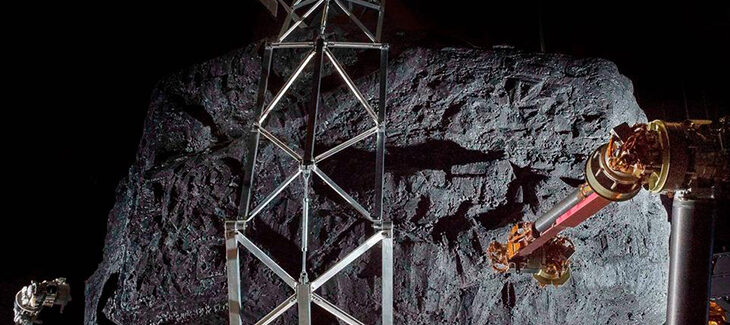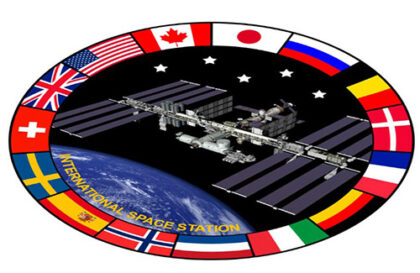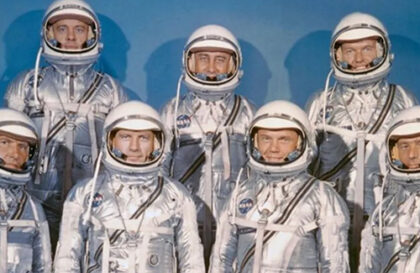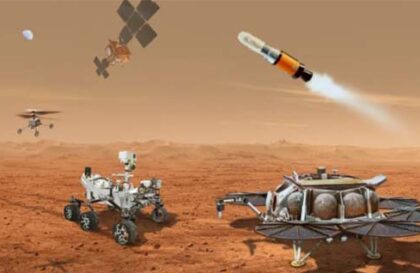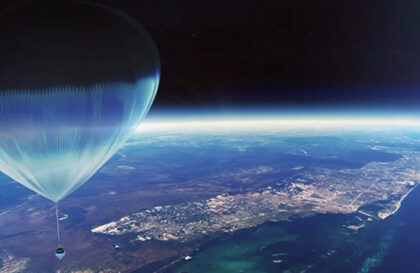1. NASA’s lunar “turn”
NASA’s lunar “turn,” failed space launches, the Trappist-1 system, the neutron star merger, the Great American Eclipse, and others.
The change in the American administration also marked a change in the priorities of NASA’s manned program. Its first victim was the lunar orbit and asteroid visit project promoted under the Obama administration. Instead, it was decided to concentrate the agency’s efforts on the Moon.
Back in the spring of 2017, it became known about negotiations in which NASA and its partners on the ISS – ESA, JAXA, and Roscosmos – participated. The parties agreed to create the International Lunar Orbital Station (Deep Space Gateway) in the next decade. In December, Donald Trump signed a directive changing the priorities of the American space program. NASA’s key goal should be to return to the Moon and create a stronghold there for future missions to Mars and other solar system worlds.
Back in the spring of 2017, it became known about negotiations in which NASA and its partners on the ISS – ESA, JAXA, and Roscosmos – participated. The parties agreed to create the International Lunar Orbital Station (Deep Space Gateway) in the next decade. In December, Donald Trump signed a directive changing the priorities of the American space program. NASA’s key goal should be to return to the Moon and create a stronghold there for future missions to Mars and other solar system worlds.
Credit: Boeing
Of course, this is primarily a symbolic document. Nevertheless, he finally dispelled all doubts about NASA’s priorities for the next few years.
2. SpaceX successes
In the field of space launches, 2017 was marked by SpaceX. In January, Elon Musk’s company returned to flights after a forced four-month break caused by the Falcon 9 explosion in September 2016.
In total, SpaceX launched 18 rockets in 2017. This is less than the 20–22 flights planned by the company, but still more than in the previous two years combined. All launches went without any complaints. On March 30, the company launched a satellite for the first time using the first stage of a Falcon 9 that had already flown into space. This year, we saw 14 successful landings of the first stages – exactly as many as planned.
SES-10 Mission | Falcon 9 First Stage Landing Credit: SpaceX
Another major success for SpaceX was its admission to military launches. Previously, they were the exclusive monopoly of the ULA alliance. The icing on the cake was the first launch of the Falcon Heavy rocket in January 2018. Elon Musk found a way to further stir public interest in this event by announcing that his personal Tesla Roadster would be on board the rocket. We can only guess what SpaceX will be able to surprise us with in the future.
The Tesla Roadster inside the fairing of the Falcon Heavy before launch. Credit: SpaceX/FLICKR (CC BY-NC-ND 2.0)
3. Failed space launches
Unfortunately, not all space launches in 2017 were successful. In July, the second launch of the Chinese Long March 5 rocket failed. Because of this, the Celestial Empire had to postpone the launch of the Chang’e-4 lunar mission to next year. In September, the nose fairing of an Indian PSLV rocket failed to separate, resulting in the loss of its payload. In November, a Soyuz-2.1b rocket launched from the Vostochny Cosmodrome fell.
A Soyuz-2.1b rocket lifts off from the Vostochny Cosmodrome Nov. 28. Controllers have not been able to contact the rocket’s primary payload, a Meteor-M weather satellite. Credit: Roscosmos
Also, there were better years for small launch vehicles intended for launching microsatellites than in 2017. In January, the Japanese experimental rocket SS-520-4 was lost. Due to a second-stage failure, she fell into the ocean.
In May, the American-New Zealand Electron rocket made its debut flight. Its first stage worked as expected and successfully separated from the rocket and the nose fairing. But when Electron reached an altitude of 224 km, engineers stopped receiving telemetry. For safety reasons, it was decided to blow up the rocket. Subsequent data analysis showed that the Electron usually continued to fly, and ground equipment failure caused the failure.
4. Trappist-1 system
The past year has generated a large amount of news, one way or another, related to exoplanets. For example, we can recall discovering an exoplanet in a polar orbit. Or the first exoplanet found using neural networks. Or the possible registration of the first exomoon. But the most notable was the TRAPPIST-1 system.
New studies of the seven Earth-like planets in the Trappist 1 system strengthen hope for life outside our solar system. Credit: NASA/JPL-Caltech
TRAPPIST-1 is a red dwarf star 40 light years away from the Sun. In February, it was announced that four new exoplanets had been discovered in this system. In total, seven earth-like bodies revolve around TRAPPIST-1. The most exciting thing is that the distance between the orbit of the inner and outer planet is only 7 million km. This is eight times less than the minimum distance between Earth and Mars.
This diagram compares the orbits of the newly discovered planets around the faint red dwarf star TRAPPIST-1 with Jupiter’s Galilean moons (Io, Europa, Ganymede, and Callisto) and the inner Solar System. The orbits of all the planets discovered around TRAPPIST-1 are much closer than Mercury to the Sun. Still, because the host star is far fainter, they are exposed to similar amounts of radiation as Venus, Earth, and Mars in our solar system. Credit: ESO/O. Porch
The orbits of at least three of these seven planets lie within the so-called—habitable zone. One can only imagine what an incredible sight could be revealed to an observer on the surface of any of these bodies. Not only would he have seen six planets in the sky, but he would likely have been able to see their major geological features (such as continents) with the naked eye.
5. The Great American Eclipse
On August 21, residents of North America had the opportunity to enjoy a magnificent celestial spectacle – a total solar eclipse. The moon’s shadow passed across 14 US states from the west to the east coast. The eclipse attracted enormous attention from the common public. Its progress was followed by millions of people, both in the United States and abroad. And, of course, we got a lot of very spectacular photographs as souvenirs from the eclipse.
Smith Rock in Oregon. Credit: Michael Shain
“Diamond Ring” from NASA Gulfstream III. Credit: NASA
6. 40th anniversary of the Voyager project
On August 20 and September 5, the Voyager 2 and Voyager 1 spacecraft celebrated their 40th anniversary. Their mission is rightfully considered epoch-making. These devices completely changed our ideas about the giant planets and their satellites. To this day, Voyager 2 is the only Earth mission to visit Uranus and Neptune. And in 2012, Voyager 1 became the first spacecraft in history to enter interstellar space.
The most incredible thing is that despite their advanced age, both travelers are still in service, and radio contact is maintained with them. Just think about it: Voyagers launched in 1977. By the way, this is the year the very first Star Wars was released.
At the beginning of 2018, Voyager 1 was 21 billion km from the Sun (140.7 AU), increasing this distance by another 17 km every second. Voyager 2 is located at a distance of over 17 billion km from the Sun (116.2 AU). Communication with the devices is expected to be maintained until about the middle of the next decade. Both Voyagers reached sufficient speed to leave the solar system forever. In some distant future, someone will still play their famous gold records.
7. Finale of the Cassini mission
The most exciting, but at the same time the saddest cosmic event of the past year was the finale of the Cassini mission. Launched back in 1997, the device has become familiar to all people who are at least partial to space. Thanks to Cassini, we have learned what lies beneath the clouds of Titan. We saw a mysterious hexagon at the north pole of Saturn. We saw the rings of the gas giant and its icy moons in every detail. Enceladus has been rediscovered – a fantastic world with an entire ocean hidden beneath its surface.
But everything ends someday. By 2017, Cassini had almost exhausted all its fuel reserves. To avoid a scenario in which an uncontrolled station in the future could collide with one of Saturn’s icy moons and bring terrestrial microorganisms to its surface, in 2010, NASA decided to burn the device in the gas giant’s atmosphere.
Illustration of NASA’s Cassini spacecraft during its final plunge into Saturn’s atmosphere on Sept. 15, 2017. Credit: NASA/JPL-Caltech
But before that, the mission had one last adventure – 22 final orbits passing between Saturn’s atmosphere and the inner edge of its ring system. During their execution, Cassini took the most detailed photographs of the planet’s rings and collected information about their density and mass. These data will help scientists determine the age and origin of the giant’s ring system.
On September 15, Cassini entered Saturn’s atmosphere. Until the last moment, the station’s instruments continued measurements, and the low-thrust engines tried to keep the device’s antenna pointed at the Earth. At 11 hours 55 minutes 46 seconds universal time, NASA’s deep space communications complex in Canberra received the last signal from Cassini. By then, the device had already disintegrated into fragments and turned into a flaming meteor.
8. Neutron star merger
On August 17, detectors at the LIGO observatory again detected gravitational waves generated during the merger of two compact objects. But if, in all previous cases, the sources of the waves were black holes, this time they were a pair of neutron stars. They collided in the galaxy NGC 4993, 130 million light years away from us.
On 17 August 2017, the Laser Interferometer Gravitational-Wave Observatory (LIGO) and the Virgo Interferometer detected gravitational waves from the collision between two neutron stars. Within 12 hours, observatories had identified the source of the event within the lenticular galaxy NGC 4993. Credit: NASA/ESA Hubble Space Telescope.
The gamma-ray burst and kilonova flare that followed the merger were observed by about 70 ground-based and space-based observatories. In real-time, astronomers saw the process of synthesis of heavy elements, including gold and platinum, predicted by theorists. They confirmed the correctness of hypotheses about the nature of mysterious short gamma-ray bursts. Science magazine named observations of neutron star mergers the scientific breakthrough of 2017.
The merger of neutron stars in the minds of scientists looks something like this (pictured is a computer model). Credit: NSF/LIGO/SONOMA STATE UNIVERSITY
Astronomers will be analyzing all the collected data for a long time. According to preliminary findings, the merged neutron stars gave birth to a black hole surrounded by a hot gas cocoon expanding at near-light speeds.
9. Interstellar object ‘Oumuamua
This year, astronomers verified the existence of another long-predicted class of objects, namely interstellar asteroids and comets. On October 19, telescopes of the Pan-STARRS system detected a body leaving the vicinity of the Sun with an orbital inclination of 123°. The data on its eccentricity and speed left no doubt. The object arrived in the solar system from interstellar space.
Credit: NASA/JPL-Caltech
After announcing the discovery, many observatories worldwide set their sights on the interstellar visitor. The object, named Oumuamua, was “habitually unusual.” The body’s surface has a reddish tint reminiscent of D and P-class asteroids. At the same time, infrared observations suggested that Oumuamua is covered with a layer of organic substances (tholins) and is more likely not an asteroid but a degenerate comet. The organics act as a protective screen, protecting the object’s core, which most likely still contains water ice, from evaporation.
‘Oumuamua’s proportions turned out to be atypical for bodies in the Solar System. The object has a very elongated shape. Its length is estimated at 400 m, and its diameter is only 40 m. Observations have shown that Oumuamua has an irregular rotation period. Most likely, this results from some event (for example, a collision or gravitational perturbation) that threw it out of the parent star system.
Oumuamua has now left the solar system. Its speed exceeds the speed of one of the fastest spacecraft, Voyager 1, which virtually eliminates the possibility of sending an interplanetary mission to it.
But don’t be upset. Astronomers believe that objects like ‘Oumuamua visit the inner solar system almost yearly. Since their brightness is very weak, they have just been detected. Only recently have wide-field survey telescopes such as Pan-STARRS become powerful enough to detect such objects. Shortly, we will find other interstellar objects in the Solar System.
10. Announcements of new space missions
2017 went down in history as a rare year when not a single new interplanetary vehicle was sent into space. Fortunately, this has been offset by the many confirmed missions exploring the solar system in the coming years. In January, NASA completed its 13th selection of the Discovery program. The agency decided to fund the Lucy and Psyche missions. Lucy’s mission will be to study Jupiter’s Trojan asteroids. Psyche will go to the metal asteroid Psyche, considered a fragment of the core of a dead protoplanet. Both missions will go into space within the next decade.
In December, NASA selected two finalists for the next New Frontiers mission. These included concepts for delivering cometary substances to Earth (CAESAR) and a flying drone (Dragonfly) to study Titan. Which of them will receive money for implementation will be determined in 2019. Don’t forget about the projects of NASA and ESA missions to explore Europa and other icy moons of Jupiter. Both are gradually moving towards their realization.
The Indian Space Research Agency (ISRO) has confirmed that the next lunar mission, Chandrayaan-2, will launch in spring 2018. The device will have three main components: an orbital module, a lander, and a small lunar rover.
South Korea also announced its lunar plans. She plans to send her device to the Moon in 2020. Japan plans to launch a station to the red planet. The main goal of the MMX mission will be to study the Martian moons and deliver a sample of Phobos matter to Earth. The French National Space Research Center and NASA will support the Japanese mission. MMX is planned to launch in September 2024.
China also has ambitious plans. Next year, the Celestial Empire will send the Chang’e-4 apparatus, which will have to land on the far side of the Moon. In another year, China will begin construction of a multi-module orbital station. But the Celestial Empire’s space plans are not limited to just this. Last year, China also announced a mission to deliver a sample of Martian material to Earth and plans to send the device to Jupiter.
The lander uses a combination of parachutes, air cushions, and reentry-slowing retro rockets to land on Mars while keeping its rover safe and operational. Credit: www.news.cn
And finally, don’t forget that in 2018, many different interplanetary missions will go into space. In addition to the already mentioned Chang’e-5 and Chandrayaan-2, the following devices can be distinguished:
- Insight (NASA). Its goal will be to study the geological structure of Mars.
- Parker Solar Probe (NASA). It will approach our star at a record distance of only 6 million km.
- BepiColombo (ESA and JAXA). The mission of this joint European-Japanese mission will be to explore Mercury.
Banner image: Mining asteroids requires changing their orbit closer to Earth. Here is a prototype of a robot for this purpose. Archive image.Credit:: AFP, NASA, TT
Image credit:
https://www.gp.se
https://feber.se
https://commons.wikimedia.org
https://www.science.org
https://spacenews.com
https://www.svt.se
https://www.eso.org
https://thealphacentauri.net
https://www.nasa.gov
https://www.eso.org
https://www.bbc.com
https://www.skyatnightmagazine.com
https://www.popsci.com
